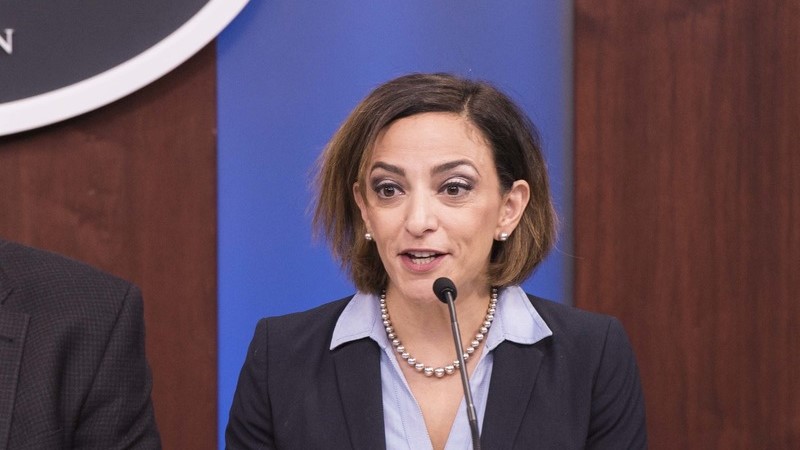
Katie Arrington, performing the duties of the Pentagon’s chief information officer, announced that the Defense Department (DOD) is developing a new program to streamline and unify its classified data networks.
“We’re creating something called Mission Network-as-a-Service,” Arrington said today during the Google Public Sector Summit in Washington, D.C.
The initiative aims to consolidate the roughly 17 networks currently used by combatant commands into a single, secure environment that improves data sharing and interoperability across the DOD – which the Trump Administration has rebranded as the Department of War.
“It takes all those disparate networks and collapses them [into] one. I can do a lot more security boundaries on one network,” Arrington said. She added that the consolidated approach will help the Pentagon better defend against increasingly complex and simultaneous cyberattacks.
Arrington explained that modern adversaries are launching multiple, hard-to-detect attacks simultaneously, making unified security essential. She emphasized the need to use artificial intelligence (AI) to identify threats in real time and to develop defense capabilities that are more efficient and cost-effective than enemy attacks.
The DOD plans to utilize “[AI] to determine how the adversary would attack that surface. We want to make it tight and use AI to do predictive analysis so we can thwart the adversary,” Arrington said.
But while AI has become a critical tool for the DOD, Arrington cautioned that responsible AI development remains both a necessity and a challenge. If not properly trained or monitored, she warned, risks could include AI-generated code, “ghost catalogs,” and the potential for models to create software without human oversight.
“We need to keep the human in the loop,” Arrington said.
She also noted that integrating AI into military systems raises funding and workforce challenges, especially as the department continues to invest in traditional defense capabilities.
“How do we afford AI when we’re buying planes and missiles?” she asked. “How do I retrain a workforce to use AI securely and intelligently?”
Arrington closed by calling for stronger collaboration between government and industry, saying the Pentagon’s efforts to unify networks and apply AI are vital to staying ahead of adversaries.
“People and the human brain are what spurred AI and got us to this point,” she said. “If we don’t include them in this development, continually, we won’t get where we need to be.”
